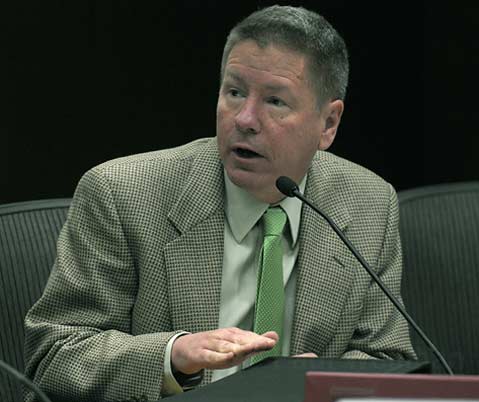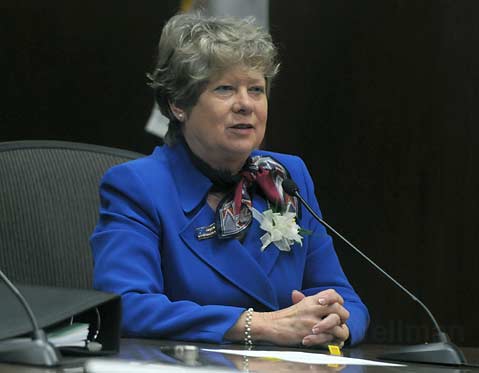Tweaked or Tweaking?
Council Divides over Planning S.B.’s Future

An ideologically divided City Council dipped its collective big toe in the water over changes proposed for Santa Barbara’s General Plan, and the rhetorical splash that small effort generated was enough to get anyone wet. On the table is a proposal to more than double residential densities in some commercial neighborhoods to accommodate more, smaller, and cheaper housing. But to maintain a low-slung skyline, affordable housing proponents have agreed to a de facto reduction—by one-third—of maximum building heights. Anything higher than 40 feet would have to be approved by supermajorities of the City Council and the Planning Commission. Still, there was much cause for alarm.

Councilmember Michael Self—an alt-transit skeptic who believes that increased densities breed crime and congestion—sermonized on the virtues of a bare bones, minimalist, regulatory approach to government. “Government feels it must parent us,” she complained. “We hear all about excess. ‘Don’t buy too much.’ ‘Don’t buy anything.’ ‘Go dumpster diving,’” she said. Santa Barbara is beautiful the way it is, she argued; don’t change it. Mayor Helene Schneider replied, “We’ve become a beautiful city, I think because of a lot of rules,” pointing out that Santa Barbara has the first architectural board of review in the country. “Talk about being a grandparent,” she said.
Councilmember Dale Francisco took aim at a proposal to increase the inclusionary housing requirements imposed on developers from 15 percent to 25 percent—meaning 25 percent of all new units built would have to be affordably priced. He noted that after all the wrangling over inclusionary rules, they’ve generated only one new unit of actual affordable housing. “It’s not working, so do more of it?” he asked. “I don’t get it.” (City planning czar Paul Casey disputed that number but admitted it was very low.) This prompted Councilmember Grant House to insist that the inclusionary requirement was but one tool City Hall deployed to keep Santa Barbara from becoming “gentrified.” Without such government intervention, House said the private market would provide housing for the very rich, government subsidies would take care of the very poor, and nothing would be done for everyone in the middle. “That’s a big donut hole,” he said.
Francisco reminded his council colleagues that he’s willing to support inclusionary requirements—as extortionate as he believes them to be—in some circumstances in the spirit of compromise. Given that a five-vote supermajority is required to rewrite the city’s general plan, a whole lot of compromising needs to be done. Supporters of the revised plan contend it’s not written in stone and that its “adaptive management” features allow the council to tweak the plan along the way, rather than wait 20 years when it’s time to re-write yet again.
A Chamber of Commerce representative exhorted the council not to charge for all downtown parking, as has been proposed to address growing congestion problems. Likewise, Cathie McCammon from the Allied Neighborhood Association cautioned that the proposed density increases come with so many bells and whistles that even city planners can’t say with certainty just how many units per acre will be allowed. “We want to know what the wildebeest will look like when all the parts are put together,” she said. In that vein, Connie Hannah of the League of Women Voters urged the council to allow density increases only for subsidized and rental housing, but not for market rate projects. The council will meet two times next week to hash out transportation and density issues.



